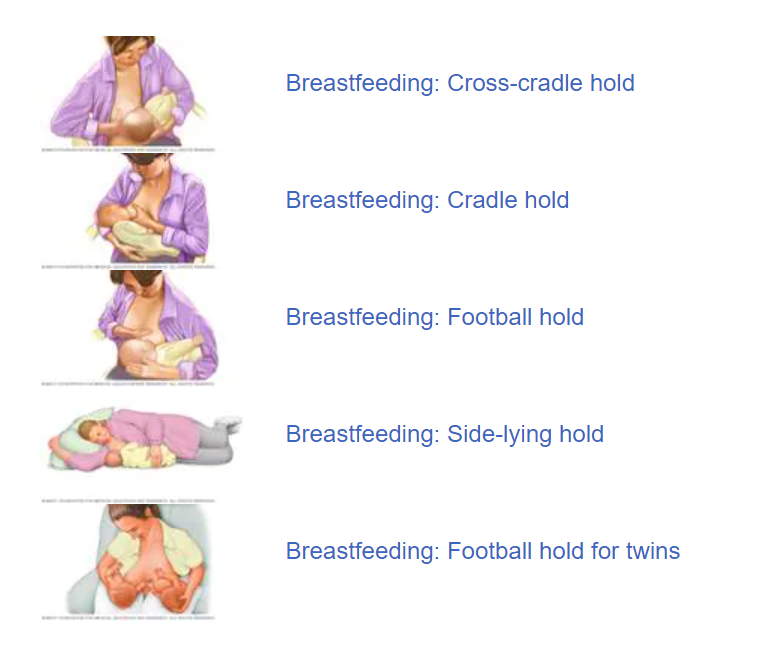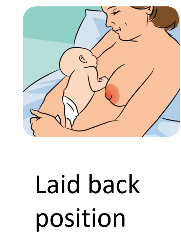CONDITIONS
Breastfeeding
Breastfeeding
Breastfeeding in Indian setting:
Why is Breastfeeding important?
Breastfeeding Protects Babies
- a. The first milk (colostrum), also known as liquid gold, is very rich in nutrients and has antibodies that protect your baby from infections.
- b. Breastfed babies have a lower risk of –
- a. Diarrhoea
- b. Respiratory infections
- c. Asthma
- d. Childhood obesity
- e. Eczema
- f. Type 2 diabetes
- g. Dental infections
- c. Breastfed babies have a low chance of ending up in the hospitalization owing to better immunity
Breastfeeding Provides the Perfect Nutrition for Babies
Benefit to the Mother
If all is well, and the mother has fallen into the breastfeeding routine, a mother has multiple benefits.
- a) Lowers the chances of developing postpartum depression.
- b) Lowers risk of multiple types of cancer (especially breast cancer), and other disorders like diabetes, high blood pressure, etc.
- c) It is also said that breastfeeding may help you lose weight.
- d) Life for a new mother is easier with breastfeeding (No sterilization hassles)
- e) Not breastfeeding costs money. Often baby bottles, baby formulas are expensive and also difficult for the baby to digest.
- f) The bonding experience between a mother and infant is invaluable.
So how to take the first step?
First, remember that feeding the baby is a skill that may take time to learn.
- – Get Comfortable – Take support of a pillow or another comfortable area
- – Contact with the baby – Hold the baby close, preferably while he/she is without clothes to maximize skin to skin contact
- – Get your baby to latch – “Let the thirsty come to the lake, not other way around” is a saying that suits here. Let the baby do the latching proactively. Bring the baby toward the breast instead of leaning toward the baby which may cause back and neck pain for the mother. Support baby’s head and shoulders as they search for your breast.
- – Don’t promote incorrect breastfeeding – If the latch is incorrect, break the seal. Put ya finger into the corner of the baby’s mouth and pull the breast out. Start the cycle until a seal with both the nipple and the areola are covered.
Remember, breastfeeding is NOT PAINFUL. If it is, thenre-think the way it is being done. A good latch is the most important for the baby to breastfeed effectively. - How long should the feedings be?
Newborns need to be breastfed every two to three hours in the beginning, for a duration of 30 minutes. However, this is subjective and can take anywhere between 20 to 45 minutes. Mothers will understand that feeding is done when the baby has completely drained at least one breast. Eventually, the baby will let you know when they finish feeding.
Remember: It is important for th baby to feed from one breast completely before moving to another. This is because there are 2 types of breastmilk – foremilk and hindmilk. Hindmilk is loaded with healthy fats and comes after the first milk, that is, foremilk.
The right position of feeding
Feeding in the right position is extremely important for mother and the baby. Try to find the best position. (images from mayo clinic)
Laid-back breastfeeding: Lying on the back with head, shoulders and neck supported, the baby is placed in front of the mother while gravity does all the work.
Cradle hold. As the name suggests, breastfeeding the baby while cradling in mother’s lap with head resting in the elbow bend. Pillows aid in elevating baby’s head to nipple level and the mother can then cup breast with the opposite hand.
Crossover hold. Holding the baby’s head with opposite hand from the breast that’s currently nursing. In this position, keeping the wrist behind baby’s shoulder blades, the other hand is used to cup the breast.
Football hold. Usually works for women who have undergone C-section. Use the hand on the nursing side of the breast to feed and latch the baby. Pillows are used to keep the baby at nipple level.
Side-lying position. Once breastfeeding routine is established, this is a great position in the middle of the night where the mother and baby face each other while mother uses the hand not lying on, to cup the breast. Just be alert of any loose bedding or pillows nearby.
Football hold for twins:
In case, choosing to feed your twins together, try the football hold — bend elbows while holding one baby on each side, while the babies’ back rest on the forearms. Always use pillows on lap or sit on a chair for comfort.


Healthy Mumma means healthy breastmilk!
The success of breastfeeding depends on eating healthy and staying hydrated post-delivery. If mothers are energized, only then will breastfeeding work in the long term. Keep in mind the following points for health and for a nutrient rich breastmilk:
- Drink lots of water. Atleast eight glasses of water a day to keep the milk flowing is essential.
- Eat a balanced diet. Eating lots of protein, whole grains, fruits and vegetables daily. Also incorporate foods high in calcium like banana, cheese, yogurt, milk, spinach.
- Eat good fats. Eating good fats like omega-3 fatty acids helps in brain-building. In many Indian communities, ghee is given to a new mother for multiple benefits.
- Don’t stop your multivitamins. Often under the stress of post-delivery, we stop our medicines of multivitamins. Ask your doctor and continue taking them until the doctor asks you to stop.
If breastfeeding is not working for mothers:
Always ask for support and help!
Ask the doctor about lactation specialist to understand if something is happening incorrectly or even to get proper guidance.
There are many support groups of new mothers to understand breastfeeding better. Join the community.
Remember, not giving up on breastfeeding has a huge number of benefits.
Lastly, even after doing everything if breastfeeding is not working, there are newly established breastmilk banks where mothers with excess breastmilk donate it, helping babies reap its benefits!
#breastfeeding #breastfeedingmom #breastfeedingmama #breastmilk
References:
- Bhatt N. Breastfeeding in India is disrupted as mothers and babies are separated in the pandemic BMJ 2020; 370 :m3316
- Eve M. Glazier, MD. Infants under 1 should not have honey. UCLA Health. https://www.uclahealth.org/news/infants-under-1-should-not-have-honey Accessed on Nov 9, 2023.
- Sara Novak. Tips for Breastfeeding a Newborn. What to expect. https://www.whattoexpect.com/first-year/breastfeeding/things-to-know-about-breastfeeding-newborn/ Accessed on Nov 9, 2023.
- Healthy Lifestyle: Breastfeeding positions. Mayo Clinic. https://www.mayoclinic.org/healthy-lifestyle/infant-and-toddler-health/multimedia/breast-feeding/sls-20076017?s=1 . Accessed on Nov 9, 2023.









